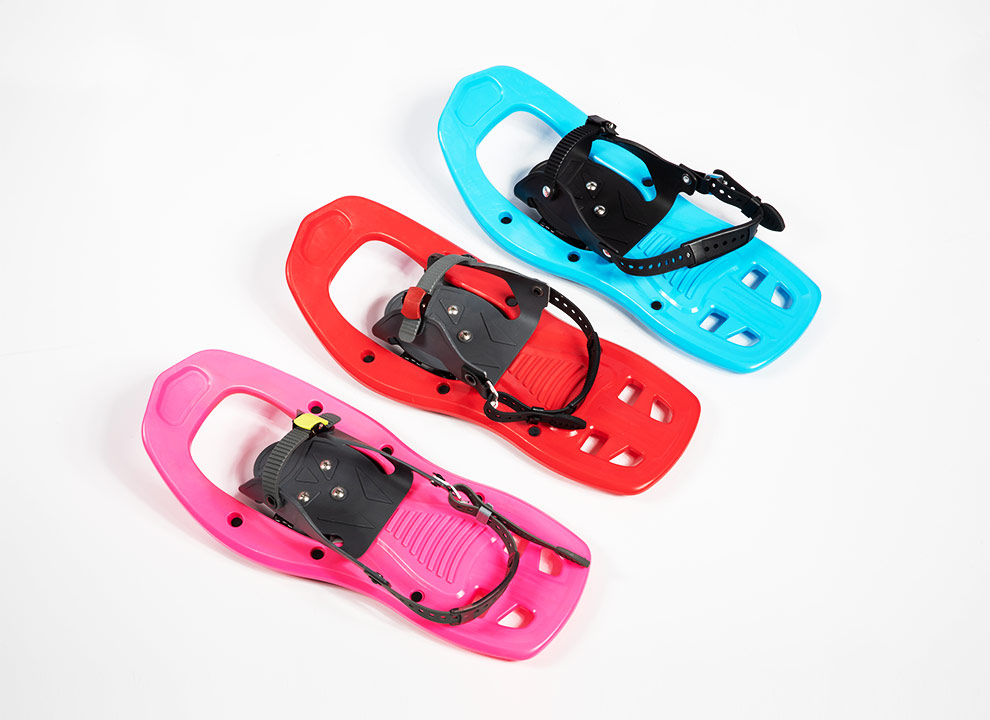Outdoor snowshoes are a great way to explore the snowy […]
Outdoor snowshoes are a great way to explore the snowy outdoors. You can choose from many different styles, sizes and designs. Considerations include frame size and shape, traction, bond compatibility with your footwear, and the type of terrain you plan to use them on. Whether you're looking to explore vast expanses of snow, local trails or mountains, snowshoeing can help you get there safely. They are also a great way to extend the hiking season.
Guide to Buying Snowshoes
Whether you want to hit the hills or hike on gentle terrain, you need to buy a good pair of outdoor snowshoes. There are many different styles, bindings and materials to choose from. Knowing what to look for will make the process as easy as possible.
The first thing to consider when buying snowshoes is the level of traction you need. Recreational hiking requires only lightweight snowshoes, while backcountry hiking requires more aggressive toe and forefoot crampons. You can also choose a pair of mountain snowshoes if you plan on tackling steep terrain or hiking trails.
Snowshoes are great for hiking in snowy environments because they are so versatile. They can be used on flat and rocky terrain, as well as knee-deep snow. For convenience and customization, you can also remove the snowshoes from the snowshoes.
type

There are many different types of outdoor snowshoes, and the right choice depends on your specific needs. The size and weight of snowshoes should depend on the terrain where you will be using them. In general, larger, stiffer shoes are better for foldable trekking pole manufacturer steep terrain, while smaller, lighter snowshoes are better for flat and less demanding terrain.
Modern snowshoes have rigid plastic or metal frames. Standard lattices are made of tubular metal, and the trim material is usually plastic or nylon. The metal frame is lightweight but has little traction. The one-piece plastic frame is lighter and provides more traction. The shape of the snowshoe is determined by the frame material. Some designs are oval, while others are tapered, providing maximum flotation and efficient movement. Different types of snowshoes also use different kinds of decking materials, which can be made of plastic or rigid composites.
Snowshoes may also have attachments that hold your feet on the snowshoes. Different models of bindings have different designs, but most have ratchet straps to secure the foot to the snowshoe. Some bindings also have a cupped toe area, which helps keep the foot from moving too much when going downhill.
size
The size of outdoor snowshoes depends on many factors, including individual weight, terrain, and equipment. Some are designed for flat terrain, while others are designed for rolling hills or steep mountains. Read the product description carefully to determine the size you should buy. There are also general sizing guides to help you determine the best snowshoes for your needs.
There are size charts for kids and adults. Children's sizes are different from men's sizes. However, women's snowshoes are similar in size to men's, but women's snowshoes are usually thinner and narrower. Women's snowshoes also have narrower bindings and traction rails for their smaller feet. Buying a pair of snowshoes that are too large for your feet can cause discomfort and difficulty walking on snow.
Snowshoes should be at least six inches wide. Some styles are gender specific, and the men's models are wider than the women's snowshoes. Men are usually heavier and have wider strides, so men usually need larger size snowshoes. Larger snowshoes will also provide more buoyancy.
cost
When it comes to outdoor snowshoes, there are plenty of options, but cost can make a big difference in your choice. While there are several high-end models to choose from, others are more affordable and still meet your needs. Also, the type of terrain you plan to travel will affect which type of snowshoe you should buy.
The construction of a snowshoe is important to the comfort and flotation it provides. Some snowshoes have crampon rails on the front, which is helpful on steeper slopes. Another important consideration is how much weight you will be carrying. For example, if you plan to hike in a remote area, you may want to choose a pair of shoes that are long and wide. You may also want to consider a pair of shoes with a heel lift, which will provide an extra sense of float. Or, if you're only going to hike in mild terrain, you can opt for a simple pair of snowshoes.
A good pair of snowshoes will keep you wearing them for years. A pair of snowshoes can range from $10 to $100. You can rent a pair for a few days or buy it outright. It is recommended to consult your doctor before engaging in any physical activity, especially if you have a medical condition.